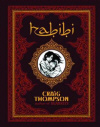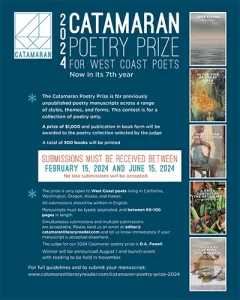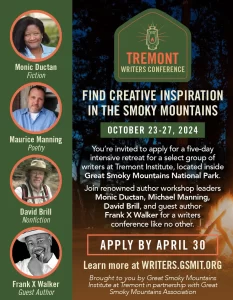Habibi
I picked up Habibi and thumbed through it with the intent of gathering its basic information for NewPages. Only a small number of the books we receive here are graphic novels, and my familiarity with the genre extends to buying Batman comics for a family member and having watched the movie version of Sin City. So I was curious to see what a two-inch-thick graphic novel consisted of.
I picked up Habibi and thumbed through it with the intent of gathering its basic information for NewPages. Only a small number of the books we receive here are graphic novels, and my familiarity with the genre extends to buying Batman comics for a family member and having watched the movie version of Sin City. So I was curious to see what a two-inch-thick graphic novel consisted of.
Nearly three hours later, I looked at the corner of the book and realized I was on page 493.
It’s just that easy to be drawn in. The story is ostensibly simple: two escaped Middle Eastern slave children care for one another as best they can in a bleak, poisoned world, trying to survive all manner of degradations. But author Craig Thompson fleshes this out into an epic tale. A number of stories from Islam, Christianity, and Judaism intertwine with the plot, along with a generous dose of Arabian Nights and a dystopian setting.
Graphic novel novices needn’t be afraid of the format. Anyone moderately well-read will find many basic tropes of a literary novel here: a storyline that bounces around in time, keeping readers in suspense as to its final resolution; characters that represent ideas, yet are fully realized on their own; and traditional themes such as sin, sexuality, the power of language, and the devastation of the environment. Reading Habibi is like reading any other good book—it just has a lot of pictures to accompany it.
And those pictures… In an interview, Thompson said he worked on this project for about six years, two of those researching and creating a rough storyboard, and four more creating the final artwork. It’s not surprising that it took so long. Lush is perhaps the best word to describe the book’s graphics—the novel, in stark black and white, employs a mix of calligraphy, Arabic script, ornate borders, and geographic motifs, leading the reader through a visual feast. Illustrations of the stories from various religions are especially extravagant. One almost forgets the book doesn’t take place in the distant past. In fact, one of the few faults I found with Habibi was the occasional modern note that yanked me from the dream-like quality of the book. When Thompson recounts the story of Noah, it’s a bit jarring to have Noah suddenly refer to his wife as a “battleaxe” and “ball and chain”—though these bits of Thompson’s humor are, to be sure, the only bits that lighten the heaviness of the story.
And make no mistake, this isn’t a read for the faint of heart. By the second page, Dodola is sold by her parents to a scribe and becomes a wife at the age of nine; this is only the beginning of a long thread of prostitution, sex, and rape that forms the bleak backbone of the book’s plot. The graphic novel format doesn’t make the author gloss over any of these issues (in fact, “graphic novel” has a couple of different meanings for this book), so the prudish or easily offended will want to read elsewhere. But though sexuality is a major portion of Habibi, none of it is gratuitous or simply titillating.
Despite the darkness of the story, there is a great deal of hope as well: the love between the two children as they grow, the thoughtful comparisons between the tales of major religions, the actions of a handful of unselfish characters. And in what other graphic novel might a reader see a side-by-side comparison between Aristotle, the “father of biology,” and Jabir Ibn Hayyan, the “father of chemistry”?
Thompson’s last work, Blankets—a different type of graphic novel, detailing his Midwestern upbringing—won a number of awards in the field; I imagine his latest will be no different. I can’t speak as to how many other graphic novels like this one exist, fully realized in a literary sense (though I’m sure they’re out there), but for readers who have been curious about the medium, Habibi is a fantastic introduction to it.





